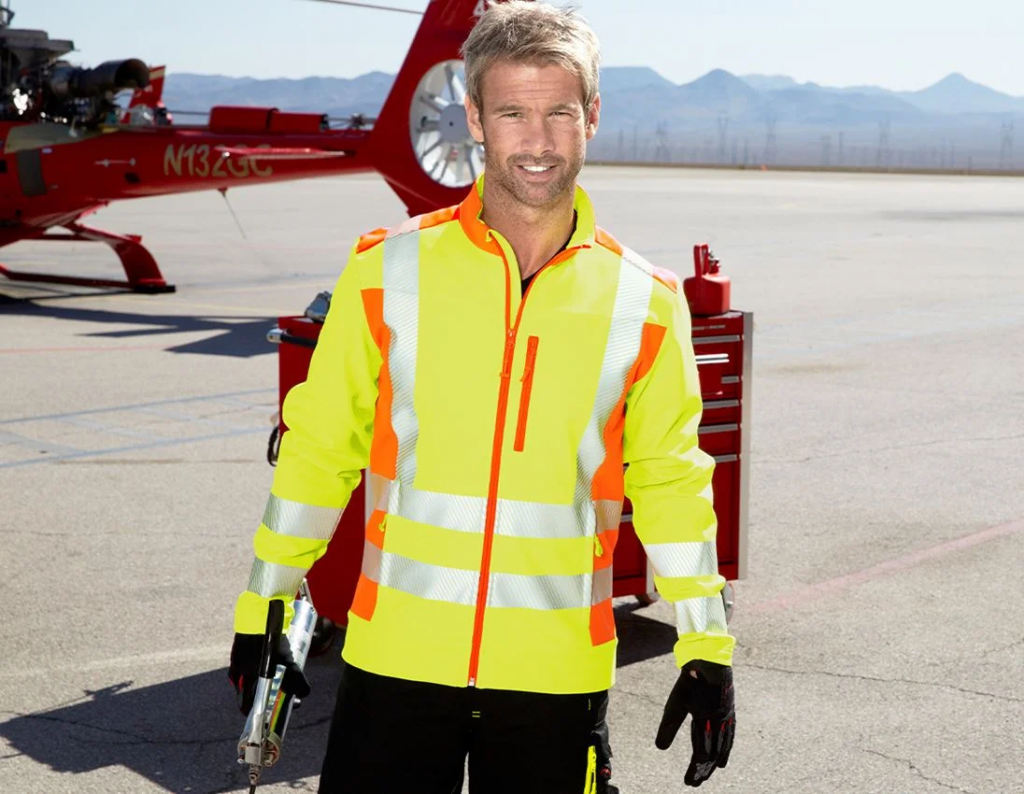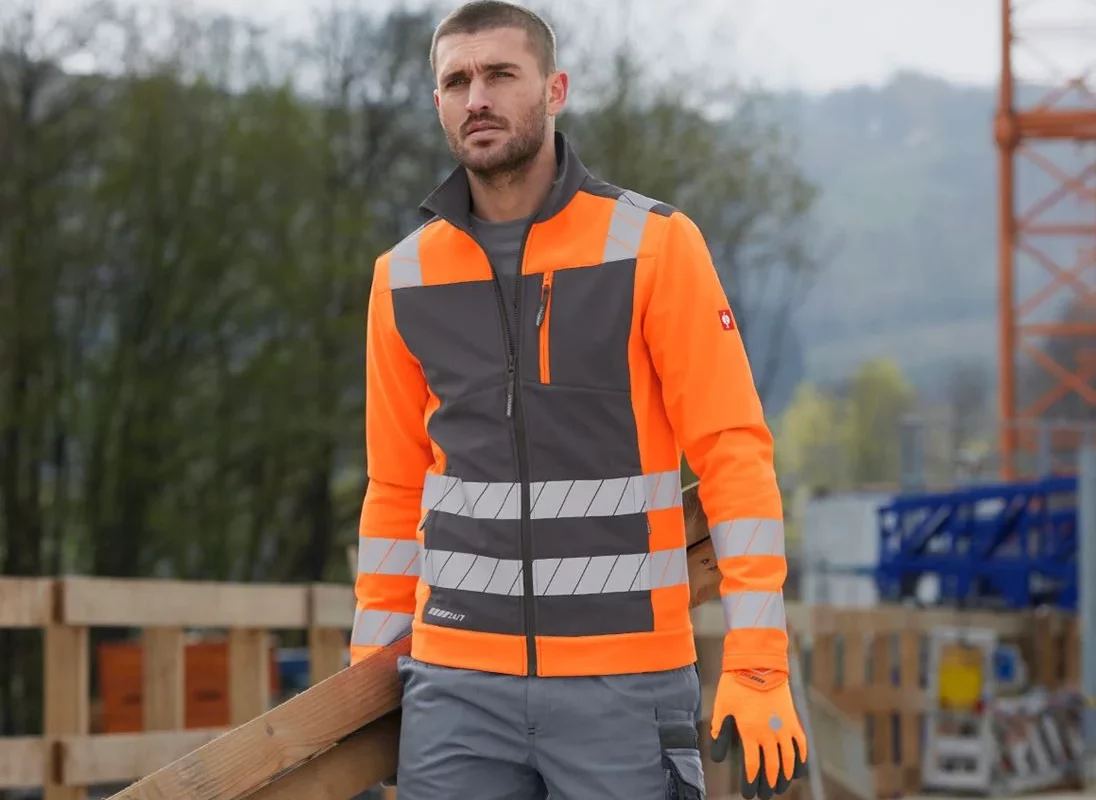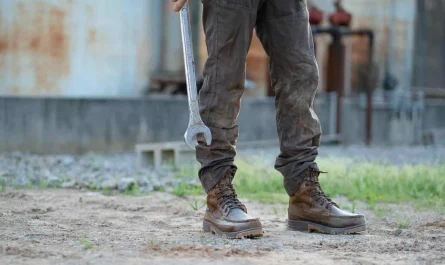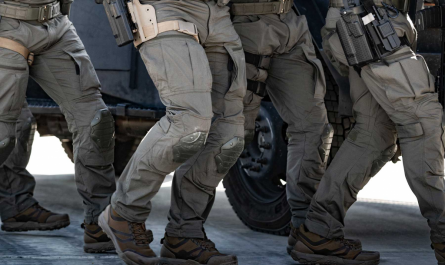In dynamic and hazardous environments—construction sites, roadside work, warehouses, and logistics centers—being seen is just as important as being protected. High-visibility (hi-vis) vests and jackets are critical safety garments designed to enhance visibility and reduce the risk of accidents, especially in low-light or high-traffic situations.
This article dives into the evolution, types, standards, and practical applications of high-visibility apparel—helping you make the right choice to keep safety in sight.
History and Evolution of High-Visibility Clothing
High-visibility garments emerged in the 1960s as part of efforts to protect railway and road workers. Early versions used simple fluorescent dyes to make wearers more noticeable during the day.
In the decades since, advanced retroreflective materials and stricter safety regulations have shaped the modern hi-vis jacket—capable of catching attention from vehicle headlights or industrial lighting, both day and night. Today’s gear is regulated by standards like EN ISO 20471 (Europe) and ANSI/ISEA 107 (North America), ensuring consistency and performance across industries.
Types of High-Visibility Vests and Jackets
1. Standard High-Visibility Vest

Description and Use:
High-visibility safety vests are an essential piece of protective apparel designed to keep workers seen and safe in environments where visibility is crucial. Lightweight and sleeveless, these vests are worn over regular clothing and provide an added layer of safety without restricting movement or adding bulk. They are especially important in jobs where staying visible can mean the difference between safety and serious injury.
Commonly required for roadside crews, construction teams, warehouse workers, traffic controllers, and event staff, high-visibility vests ensure that individuals are clearly seen by others, especially in low-light or high-traffic conditions. Their effectiveness lies in their bright, fluorescent colors—typically neon yellow, orange, or red—which stand out during the day, combined with reflective striping that enhances visibility in the dark when illuminated by headlights or other light sources.
These vests feature reflective bands around the torso and shoulders to provide 360° visibility from all angles. While they don’t offer weather protection or impact resistance, their role in visual safety is critical. Many styles are designed to meet ANSI/ISEA visibility standards, ensuring compliance with occupational safety regulations.
Technical Characteristics:
- Complies with EN ISO 20471: Class 1 or Class 2
- Fluorescent polyester with retroreflective tape
- Easy hook-and-loop or zipper closures
- Weightless design for layering over any outfit
Price Range:
€5 – €30
2. High-Visibility Softshell Jacket

Description and Use:
Softshell jackets are the perfect combination of visibility, insulation, and wind resistance, making them a go-to choice for workers in cooler, outdoor environments. These jackets are designed to provide essential protection against the elements, offering a balance between comfort and durability without restricting mobility. Whether it’s a chilly morning or a breezy afternoon, softshell jackets shield the wearer from light rain, wind, and moderate cold, keeping workers comfortable and focused on the task at hand.
Ideal for jobs like delivery drivers, outdoor maintenance crews, construction foremen, and field service workers, softshell jackets offer practicality and protection while allowing freedom of movement. They often come with reflective elements for added visibility in low-light conditions, ensuring safety in high-traffic or hazardous environments.
Many models feature adjustable cuffs, multiple pockets, and water-repellent coatings for increased utility and convenience. These jackets are lightweight enough for ease of movement, yet insulated enough to retain warmth in cooler weather. The flexibility of softshell jackets makes them a popular choice for workers who need a versatile garment that can handle changing weather conditions without compromising on performance or comfort.
Technical Characteristics:
- EN ISO 20471: Class 2 or Class 3 certified
- Windproof and water-resistant materials
- Retroreflective stripes on arms, torso, and shoulders
- Available with fleece lining or detachable hoods
Price Range:
€40 – €120
3. High-Visibility Winter Jacket / Parka

Description and Use:
Winter hi-vis jackets are designed to provide optimal protection for workers in cold, hazardous environments while ensuring they remain visible and safe. Combining high-visibility materials with thermal insulation, these jackets are essential for road crews, cold storage workers, railway personnel, and anyone operating outdoors during the winter months. They provide a critical layer of defense against the cold while maintaining the visibility needed for high-risk jobs.
These jackets are built for durability and weather resistance, featuring waterproof shells that keep the wearer dry in snowy, rainy, or wet conditions. The thermal insulation and quilted linings trap warmth, offering protection from the cold without sacrificing comfort. Extended back panels and adjustable hoods help keep the wearer fully shielded from the elements, preventing exposure to cold drafts or snow.
For workers who need to stay visible in low-light or wintery conditions, these jackets are outfitted with reflective strips that ensure 360° visibility from all angles. Whether it’s during night shifts or inclement weather, winter hi-vis jackets are designed to stand up to the demands of tough, outdoor work environments.
Technical Characteristics:
- EN ISO 20471: Class 3 certified
- PU-coated outer layer for waterproofing
- Thermal insulation (synthetic or down)
- Retroreflective tape for low-light conditions
Price Range:
€60 – €180
Common Applications in Work Environments
- Construction Sites: Class 2 or 3 vests and jackets for visibility around heavy machinery.
- Roadside & Traffic Control: Class 3 gear with full-body reflectivity to alert drivers at high speed.
- Warehouse & Forklift Zones: Lightweight vests to distinguish personnel and prevent collisions.
- Railways & Airports: Flame-resistant or anti-static high-vis wear for specialized environments.
- Emergency & Utility Work: Insulated or waterproof hi-vis outerwear for rapid-response teams.
High-Visibility Standards (Key Certifications)
- EN ISO 20471: European standard defining Class 1–3 garments based on coverage and reflectivity.
- ANSI/ISEA 107: North American standard categorizing garments into Performance Classes (1–3) and types (O, R, P).
- EN 343: Specifies waterproof and breathability levels for weather-protective clothing.
Conclusion
High-visibility vests and jackets do more than just meet workplace regulations—they actively contribute to saving lives. In high-risk environments, whether working roadside in the rain, managing a construction site at dawn, or operating heavy machinery, staying visible is crucial for preventing accidents and ensuring safety. Choosing the right high-visibility apparel not only keeps you compliant with safety standards but also ensures that you remain protected and easily seen by others, especially in low-light or hazardous conditions.
High-visibility gear is designed with bold fluorescent colors, like yellow, orange, or red, and reflective stripes to enhance visibility in all conditions. The combination of these elements allows workers to be seen from a distance, reducing the risk of collisions or accidents. Whether you’re wearing a vest, jacket, or full-body garment, ensuring proper visibility helps protect workers from moving vehicles, machinery, and other hazards in busy or dangerous environments.
Understanding the different types, features, and standards of hi-vis apparel is key to selecting the right garment for your specific work environment. This knowledge helps you choose the appropriate level of visibility, comfort, and protection based on your job’s requirements. With the right hi-vis gear, you make visibility your first line of defense, ensuring safety every step of the way.


